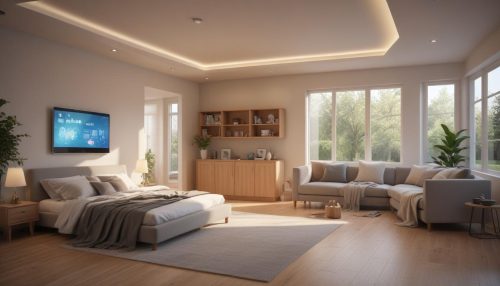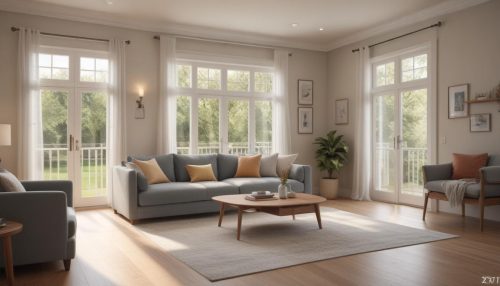Renovation Secrets That Could Transform Your Home
Olivia Morgan August 21, 2025
Curious about boosting comfort, value, or energy efficiency in your home? This guide uncovers renovation secrets, insider tips, and financing options that could help you create living spaces that truly suits your lifestyle and budget—without overpromising results or implying shortcuts.
Understanding Home Renovation Trends
Staying informed about renovation trends can help homeowners make choices that add long-term value and enjoyment to their living environment. Modern home remodeling often involves blending aesthetics with practical upgrades such as open-concept designs, smart storage, and multipurpose spaces. By exploring what’s new in the renovation world, you’re better positioned to make informed decisions that both suit your daily needs and reflect a growing awareness of energy efficiency and sustainability.
Some renovations focus on enhancing energy efficiency or water conservation, which have become increasingly important amid rising utility costs. Installing features like energy-efficient windows, improved insulation, and low-flow fixtures are just a few examples. These updates can both reduce environmental impact and help manage monthly expenses without sacrificing style. Materials made from recycled or eco-friendly sources also see rising demand, blending environmental responsibility with convenience and design.
Technology now plays a central role in home improvements. From smart thermostats to security systems and lighting that adapts to lifestyle, homeowners embrace automation to simplify everyday routines. Flexible living spaces, such as transforming spare bedrooms into home offices, cater to the evolving needs of today’s families. Keeping pace with these trends doesn’t mean constant redesign; instead, it encourages thoughtful investment in updates that offer both comfort and versatility for years to come.
Setting Realistic Goals for Remodels
Before beginning a renovation journey, it helps to establish clear, attainable goals. A practical approach often starts with smaller updates—such as fresh paint, updated lighting, or improved storage—before tackling major remodels. Homeowners benefit from taking time to outline their vision, prioritize based on need versus desire, and set a budget that accommodates both upgrades and unexpected costs. Research consistently suggests that a thoughtful plan reduces stress and supports more successful remodels.
Setting priorities is essential, especially when resources are limited. Some focus first on necessary repairs, like addressing outdated electrical systems or worn roofing, while others prefer cosmetic changes. Identifying which improvements might raise a property’s value can influence choices; for example, minor kitchen or bathroom remodels tend to result in a reasonable return on investment. By examining which changes might offer the most utility or appreciation, you can make practical yet inspired decisions that meet your goals.
Documenting your goals is another effective strategy. Many experts suggest creating a renovation journal or checklist. This step clarifies vision and allows homeowners to track progress and expenses over time. Reputable organizations often recommend consulting with certified contractors or architects, especially for more substantial projects, to ensure both building code compliance and a smooth remodeling process. Find resources that help break down complex projects into manageable tasks, making the dream of a refreshed home more achievable.
Finding Inspiration for Every Budget
Inspiration can come from anywhere, but the right tools make it easier to turn ideas into action. Online galleries, architectural magazines, and nonprofit design guides often provide cost-effective home remodeling concepts that suit a range of budgets. Many homeowners start by exploring virtual room planners or community-led workshops to visualize potential updates before purchasing materials. Smart research equips renovators to adapt trends in a way that respects both their budget and design personality.
Repurposing materials and DIY upgrades can stretch funds further while adding a unique touch. Using reclaimed wood, vintage fixtures, or eco-friendly paint allows renovators to personalize their spaces economically. Some organizations local to your area may offer programs encouraging sustainable renovations, often promoting upcycling or group-buys for supplies. Cultivating resourcefulness lets homeowners create a distinct look while reducing waste and supporting greener living practices.
Financing tools—such as renovation loans or government incentives—may also play a role in managing expenses. Several programs are dedicated to energy-saving or accessibility improvements, sometimes offering rebates or affordable financing options. Understanding what’s available to you involves reading reputable sources and consulting nonprofit guides or local municipalities. Many home transformation journeys start with a single inspired, budget-conscious change and grow from there with careful stewardship of financial resources.
Maximizing Comfort and Energy Efficiency
Comfort doesn’t just mean plush furnishings or beautiful finishes. Core elements such as proper insulation, effective heating and cooling, and quality windows make a real difference in everyday life. Upgrades like weatherstripping doors, sealing leaks, or adding programmable thermostats can deliver tangible improvements in comfort and energy savings. The U.S. Department of Energy identifies such steps as key to reducing waste and lowering bills, making them accessible options for many renovation projects.
Natural light and ventilation are other crucial factors in creating inviting, healthy spaces. Techniques such as installing skylights, enlarging windows, or adding exterior shading can elevate a room’s ambiance and improve well-being. Enhanced daylighting not only elevates mood but also positively affects energy usage by reducing dependence on artificial lighting. These approaches are often included in home improvement incentive programs designed to promote healthier and more efficient living environments.
Home automation systems are gaining attention for their role in energy management. Smart thermostats, connected appliances, and adaptive lighting allow homeowners to manage settings remotely, automatically reducing demand during peak hours. Installing such systems can complement other energy-saving upgrades for comprehensive results. Staying informed about available rebates or tax credits is an effective way to offset upfront costs, making sustainable renovation goals more achievable and aligned with modern lifestyles.
Avoiding Common Renovation Challenges
Every renovation brings its own set of puzzles—delays, cost overruns, or scope changes are common. Industry experts stress the importance of detailed planning, clear contracts, and open communication with contractors. Gathering multiple quotes, checking references, and understanding warranty options protect your investment and promote accountability. These proactive steps serve as safety nets against many renovation hurdles and foster more positive project outcomes.
Hidden issues, such as outdated wiring, structural surprises, or the need for permits, can affect timelines and budgets. Homeowners benefit from conducting thorough inspections before starting upgrades and allowing flexibility in project planning. Resources like municipal building departments and nonprofit homeowner guides outline regulations and best practices for managing unforeseen obstacles. The more preparation is invested, the less likely projects are to be derailed by surprises.
Even with careful planning, stress or decision fatigue may arise. Designating backup plans, keeping contingency funds, and encouraging patience among household members can ease the process. Some renovators join online or local support groups to share challenges and successes, tapping into community wisdom. Every successful remodel is as much about adaptation and learning as it is about careful selection of finishes and layouts.
Creating Value Through Smart Home Improvements
Strategic renovations can build lasting value—both for daily enjoyment and future resale prospects. Projects like upgrading kitchens, bathrooms, or entryways often show meaningful returns, while landscape enhancements can elevate curb appeal. Homeowners who focus on quality workmanship and timeless design, rather than fleeting trends, tend to see greater appreciation. Experts recommend considering both market conditions and personal plans before making significant improvements.
Energy-efficient improvements, such as enhanced insulation, solar panels, or high-efficiency appliances, return both monthly savings and increased property value. A growing number of buyers specifically seek out these features when selecting a home. Documentation, such as records of upgrades or certifications, can further boost appeal for prospective buyers who value sustainability and modern living conveniences.
Some communities and municipal organizations offer resources that guide smart home investments. Accessing free seminars or consulting nonprofit housing advisors may uncover unique grants, incentive programs, or low-interest financing tailored to energy or accessibility upgrades. Creating value is often the sum of smaller, well-executed changes that together make your property stand out in comfort, efficiency, and appeal over the long term.
References
1. U.S. Department of Energy. (2023). Home Energy Savings. Retrieved from https://www.energy.gov/energysaver/energy-saver
2. National Association of Home Builders. (2023). Remodeling Impact Report. Retrieved from https://www.nahb.org/news-and-economics/housing-economics/remodeling
3. ENERGY STAR. (2024). Guide to Energy-Efficient Home Improvements. Retrieved from https://www.energystar.gov/campaign/assessYourHome
4. U.S. Department of Housing and Urban Development. (2024). Rehab Program Guidelines. Retrieved from https://www.hud.gov/program_offices/comm_planning/revitalization
5. American Society of Interior Designers. (2023). Home Design Trends Survey. Retrieved from https://www.asid.org/resources/resources/view/resource-center/265
6. The Spruce. (2024). Home Renovation Planning Guide. Retrieved from https://www.thespruce.com/home-renovation-plan-5204084





